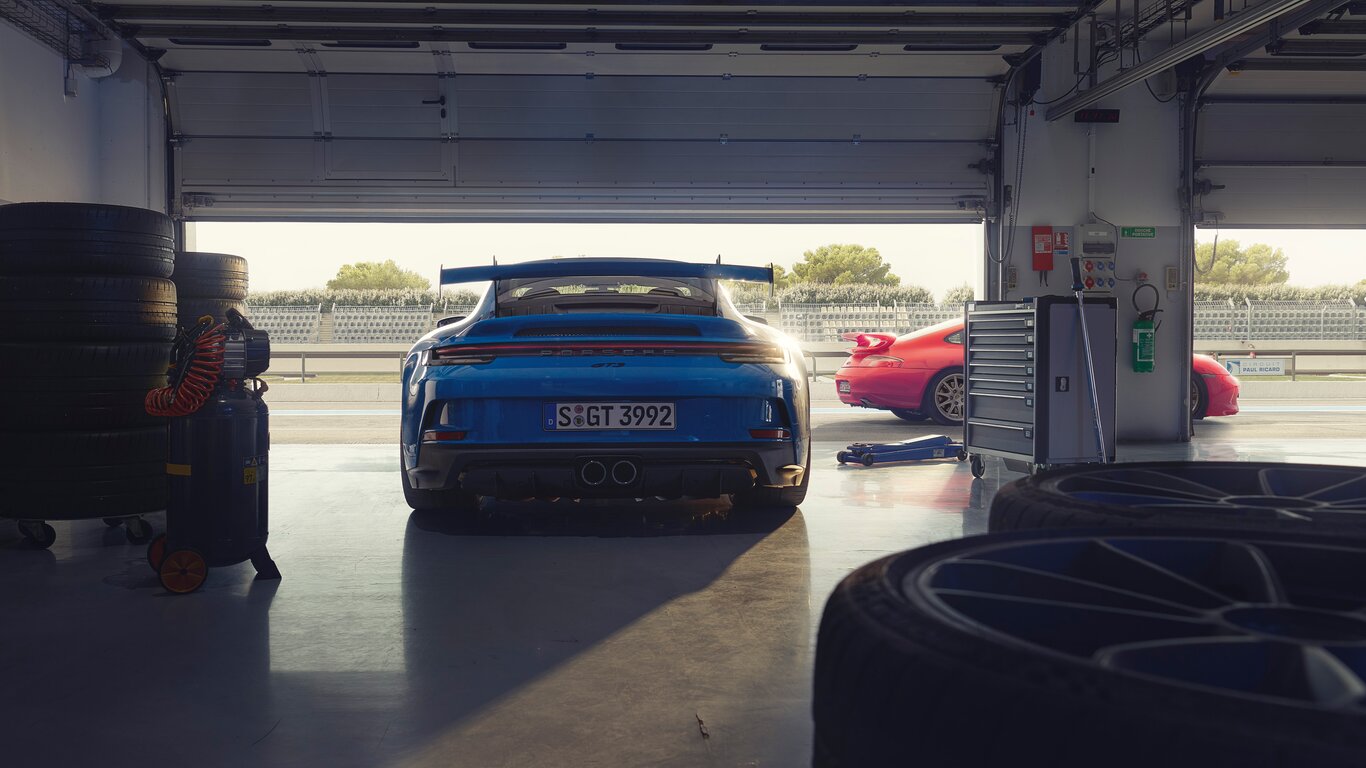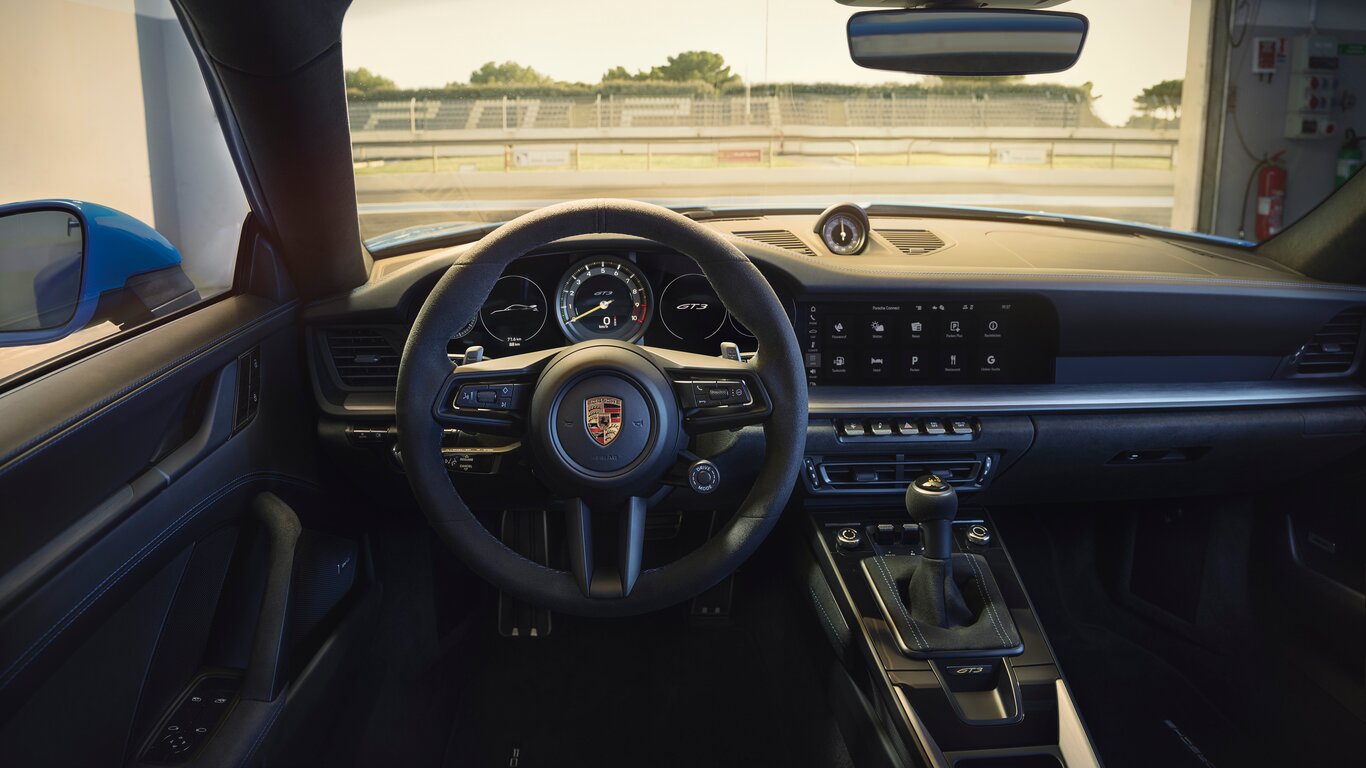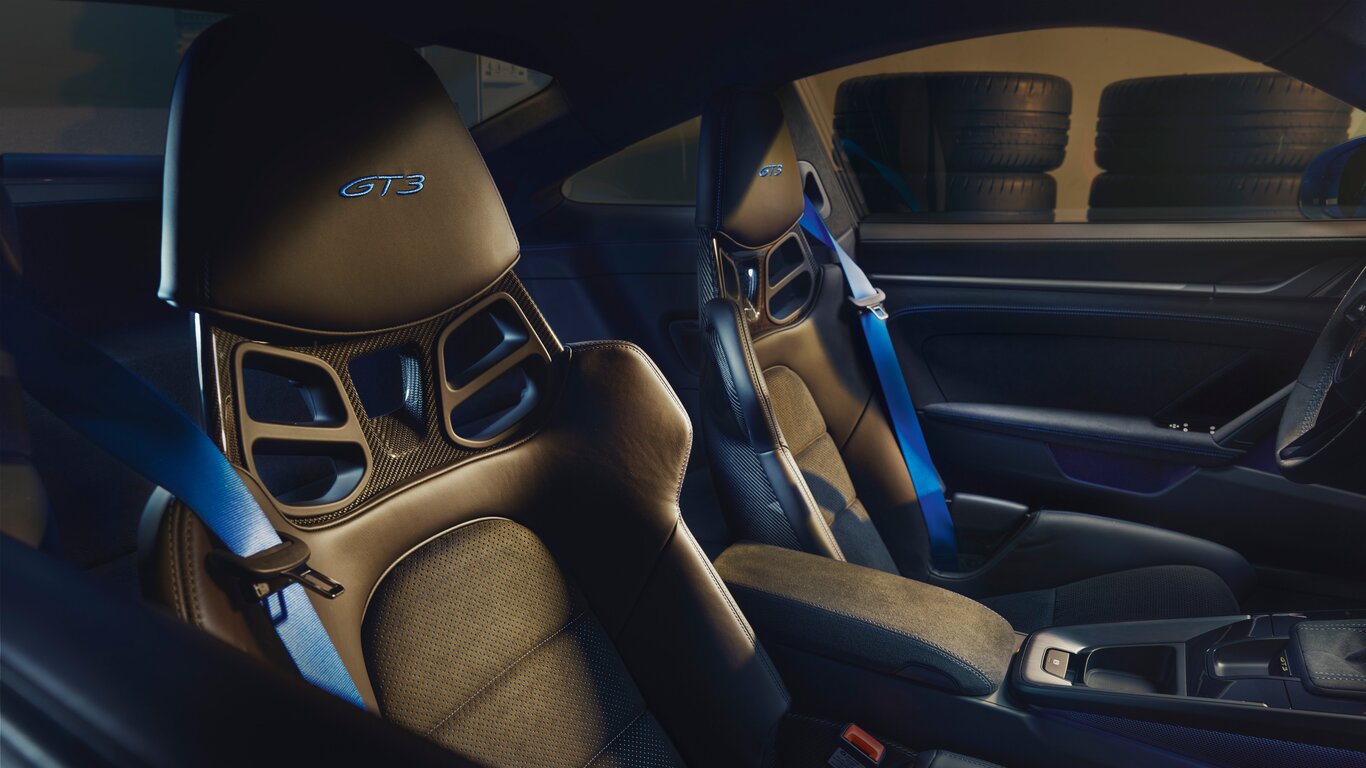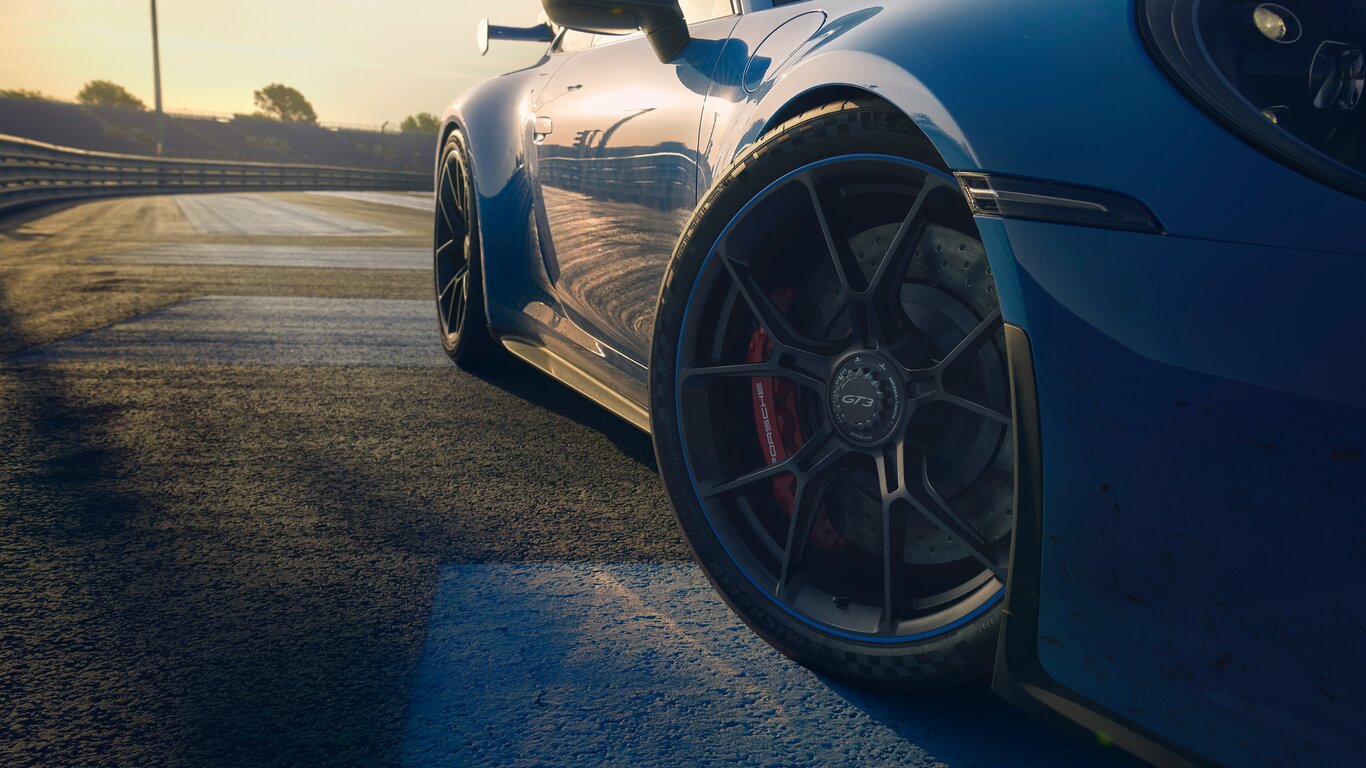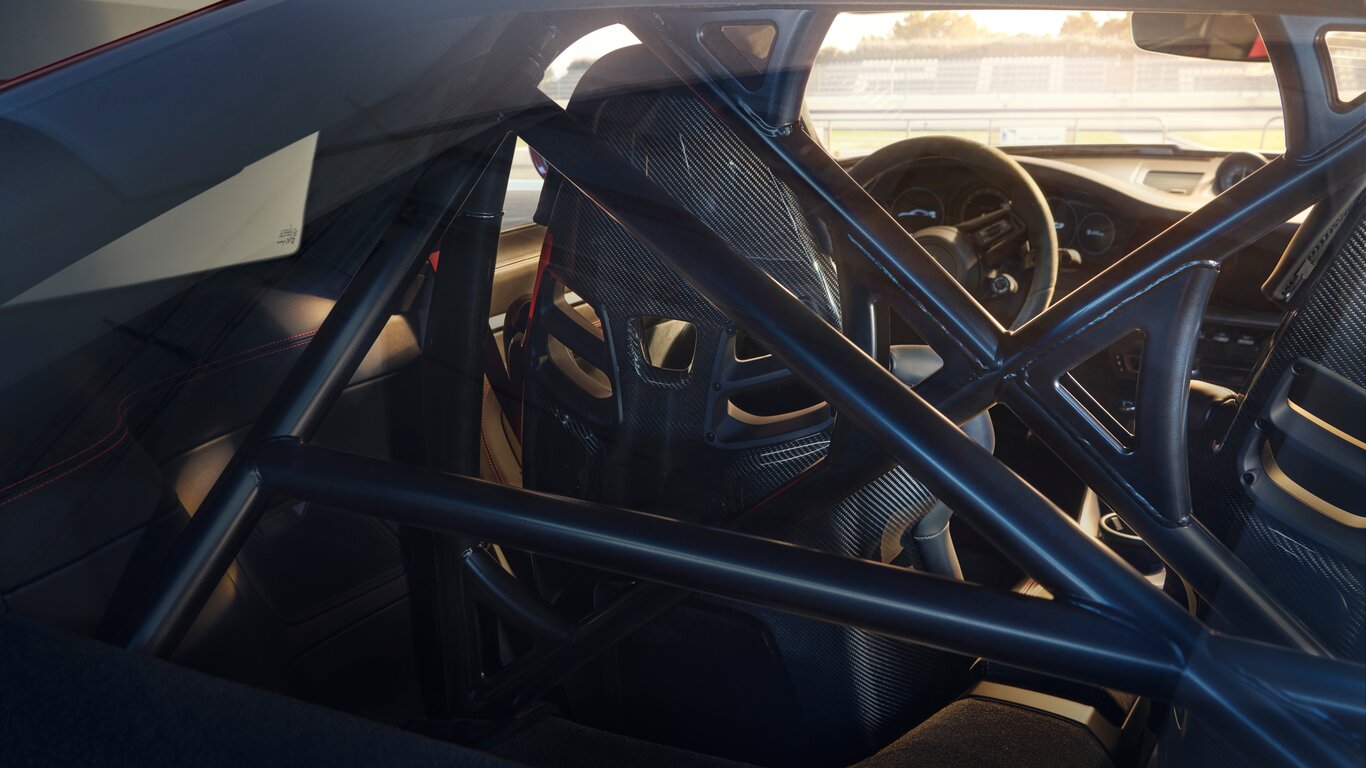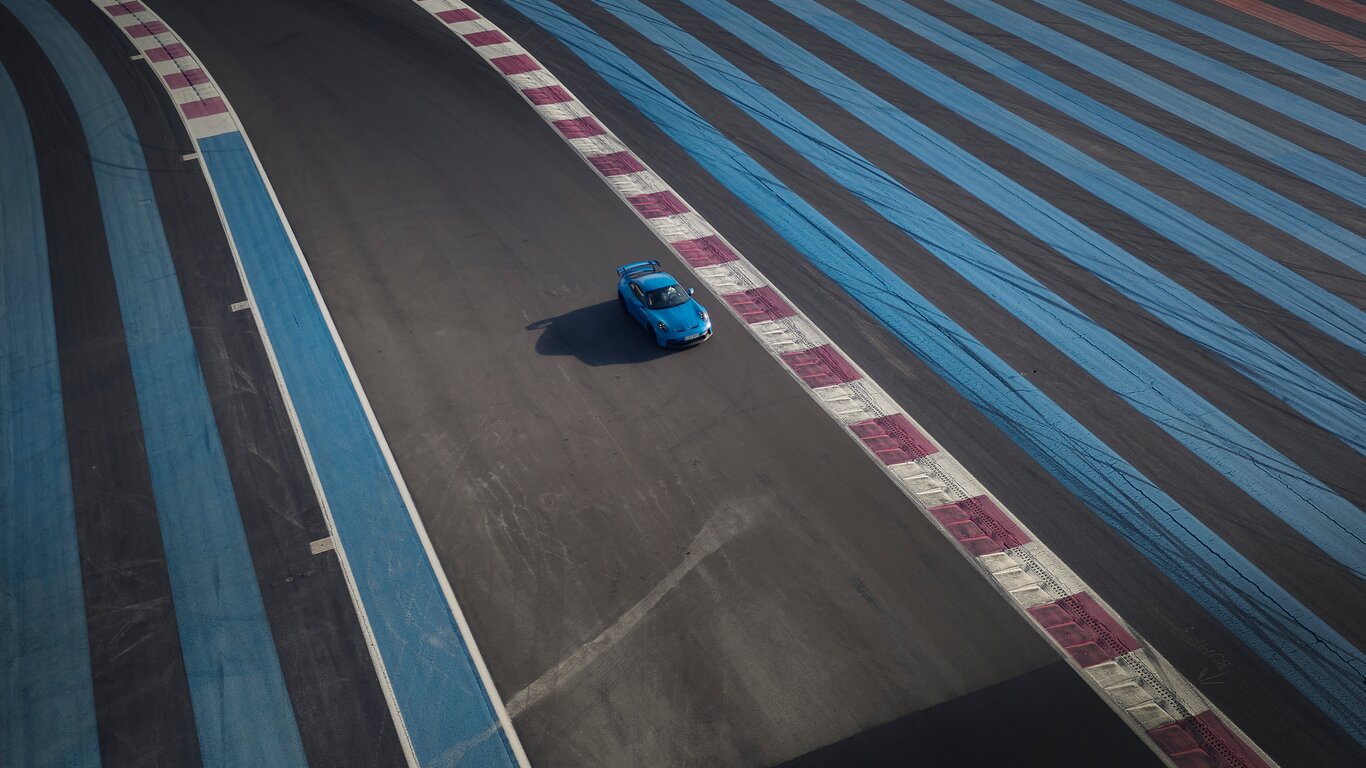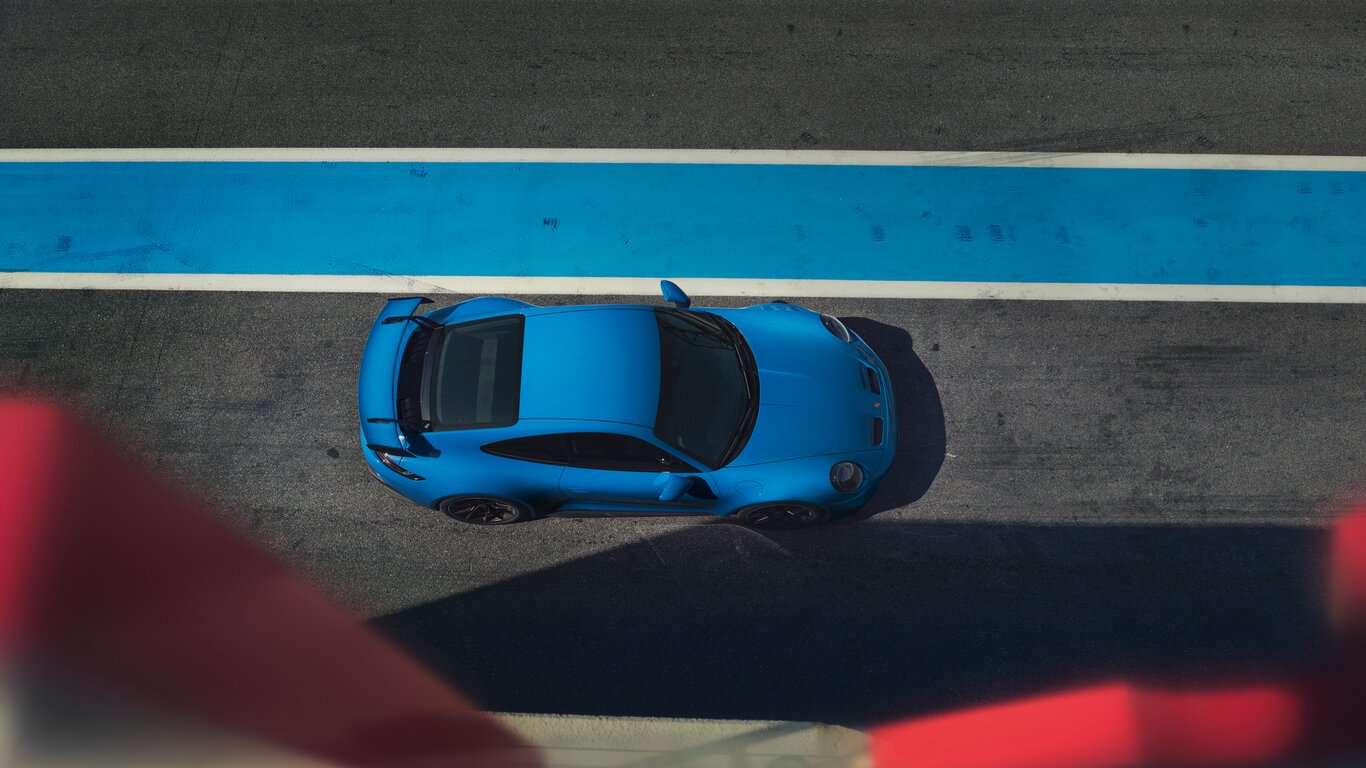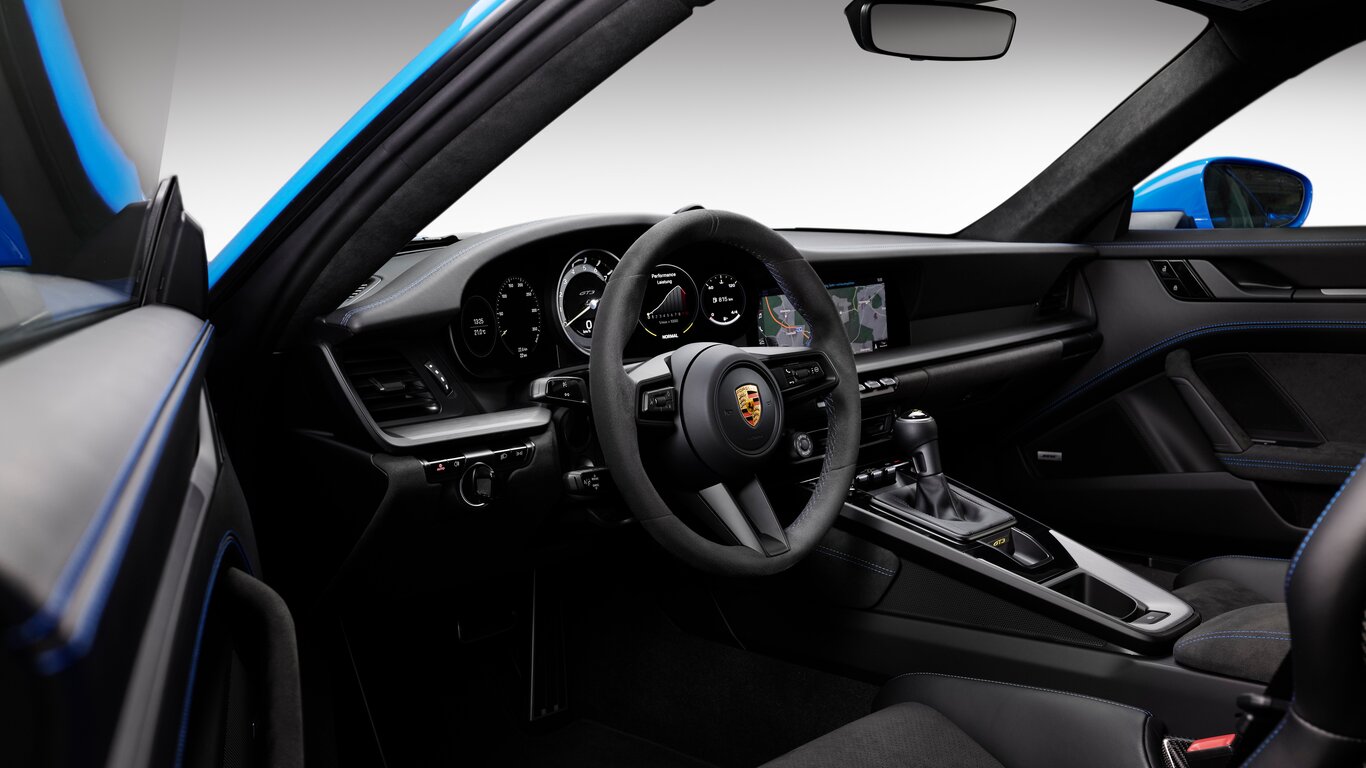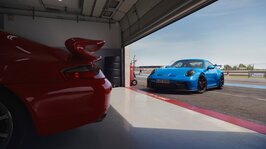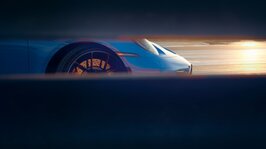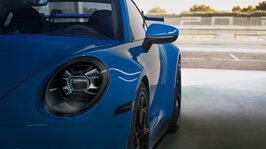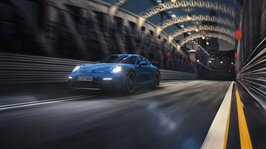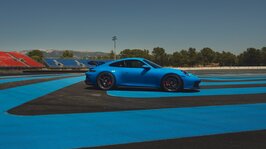Master of the Nürburgring Nordschleife
The new 911 GT3 reaches its full potential on closed racing circuits – like the 20.8 kilometre-long Nürburgring Nordschleife. It lapped the most difficult race track in the world in 6:59.927 minutes. Development driver Lars Kern set this time during the final fine-tuning work on the car. Porsche brand ambassador Jörg Bergmeister achieved similar lap times repeatedly in succession – a sign of the consistent performance of the new top-performance sports car.
Emotive high-revving boxer engine
The 4.0-litre, 375 kW (510 PS), high-revving GT boxer engine lends the new 911 GT3 a thoroughbred temperament and accentuates this with an emotive sound. It delivers 10 PS more than the previous model and, like its predecessor, has a maximum engine speed of 9,000 rpm The maximum torque of the naturally aspirated six-cylinder boxer engine has increased from 460 to 470 Nm. As in motorsport versions, the intake system features six individual throttle valves. Despite having two gasoline particulate filters, the lightweight sports exhaust system weighs less than the one fitted to the previous 911 GT3.
Manual or automatic gearshifts
In addition to a six-speed GT manual transmission with auto-blip function, a seven-speed Sport PDK transmission is also available. This allows gear changes within milliseconds without interrupting drive to the wheels. It therefore provides the basis for breathtaking acceleration: the new 911 GT3 catapults from 0 to 100 km/h in 3.4 seconds, reaching 200 km/h in 10.8 seconds. Porsche also offers the seventh edition of the 911 GT3 exclusively with rear-wheel drive.
Front axle with motorsport DNA
It is the first time that the intensively redeveloped double-wishbone front axle, already known from the successful Le Mans-winning 911 RSR, has been used in a series-production Porsche model. Among other things, this offers higher camber stiffness and eliminates disturbing lateral forces acting on the shock absorbers. The result is extraordinarily agile turn-in behaviour and a high level of driveability at the limit of grip.
Rear-axle steering with even more precise guidance
The tried-and-tested five-link rear axle based on the 'LSA' concept (lightweight, stable, agile) guides the wheels with even greater precision thanks to additional ball joints for the lower wishbones, which are subject to particularly high stress. Special shock absorbers combine greater driving comfort with improved race track performance. Rear-axle steering is also equipped as standard: it turns the rear wheels by up to two degrees in the direction of or contrary to the steering direction of the front axle, depending on the driving speed.
Larger brakes with more bite
With a diameter of 408 millimetres instead of 380 mm, the lightweight brake discs on the front axle are considerably larger than on the previous 911 GT3. In addition to high-performance sports tyres, road-approved race track tyres are also now available as an option for the first time. The front-axle lift system features a Smart Lift memory function.
Lightweight by design
In a high-performance sports car like the new 911 GT3, every excess kilo is one too many. That is why Porsche has comprehensively optimised the car’s weight – from the lightweight glass in all the windows and the lightweight sports exhaust system through to the LiFePO4 starter battery. The result: its weight-to-power ratio of 2.8 kilogram/PS for the manual-gearbox variant is now even closer to that of a thoroughbred racing car.

Many components made of carbon fibre
The subject of weight reduction also affects the muscular aluminium and steel body of the new 911 GT3, which now contains an even higher proportion of carbon fibre reinforced plastic (CFRP). The lightweight composite material is used both for the bonnet and for the rear wing and spoiler. The roof is also available in CFRP on request.
More downforce for faster lap times
The fully functional rear diffuser of the new 911 GT3 generates four times as much downforce as in the predecessor, as the interplay between the front diffusers and the wide spoiler lip ensures a more consistent airflow along the fully clad vehicle underbody. And thanks to the 'swan-neck' mounting, the air can flow more freely under the rear wing. The new 911 GT3 generates around 50 per cent more downforce overall than its predecessor, even in the factory aerodynamics set-up. In the Performance position for race-track driving, the downforce is even increased by 150 per cent at a speed of 200 km/h.
Optional roll bar
The 911 GT3 feels particularly at home on the race track. This makes the Clubsport package, which is available at no extra cost, particularly popular. In addition to a roll bar mounted behind the front seats, it also includes a six-point harness on the driver’s side, a motorsport-specification hand-held fire extinguisher, and a battery disconnect switch.





